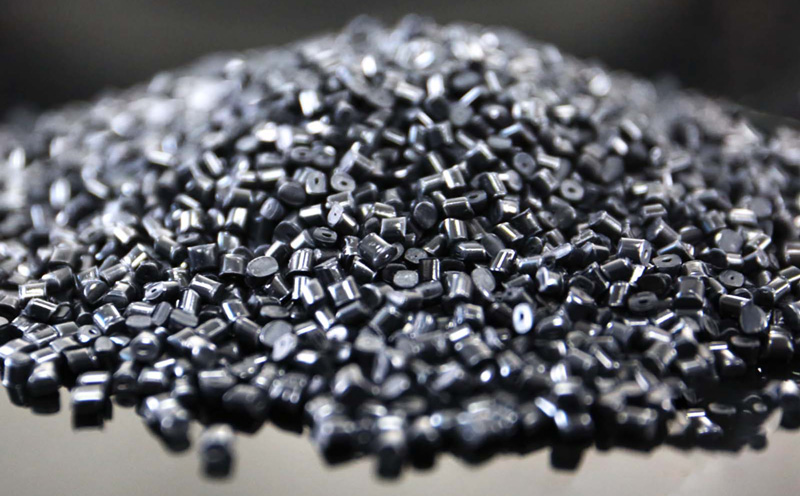High-performance plastic profiles are extruded by vacuum, which has better compactness than injection molded parts, and at the same time avoids defects such as reduced strength of welded lines caused by injection molded parts; high-performance profiles are suitable for small batches and high-demand parts. High-performance plastic profiles cover plates, rods and pipes.
PPS profile
PPS exhibits excellent comprehensive properties in chemical and high temperature environments, including wear resistance, high load capacity and dimensional stability. PPS is suitable for applications where PA, POM, PET, PEI and PSU are defective and PI, PEEK and PAI are too expensive and must be replaced by more economical materials.
Because TECHRON HPV PPS has evenly distributed internal lubricity, it exhibits excellent wear resistance and low friction coefficient. It overcomes the defects of high friction coefficient of pure PPS and premature wear of the corresponding surface of moving parts caused by glass fiber reinforced PPS. Undoubtedly, these characteristics and excellent chemical resistance have made TECHRON HPV PPS found a wide range of applications in various industrial equipment, such as industrial drying and food processing ovens, chemical equipment, mechanical bearings and electrical insulation systems.
PEI profile
This advanced polymer has outstanding thermal power (long-term temperature resistance of 180°C), good toughness and rigidity, high hardness, good wear resistance and outstanding electrical properties, making it extremely suitable for use In terms of electrical/electronic insulating parts and various structural components that require high strength and rigidity at high temperatures. Because of its good resistance to hydrolysis, it has been widely used in the fields of medical equipment and analytical instruments. At the same time, as an amorphous material, PEI has good thermal insulation properties due to its ultra-high melting point. PEI also has excellent mechanical properties, electrical insulation properties, radiation resistance, high and low temperature resistance and wear resistance, and can transmit microwaves.
PES profile
Has excellent thermal performance and oxidation stability. The continuous use temperature of PES confirmed by UL is 180°C. Insoluble in polar solvents such as ketones and some halogen-containing hydrocarbons. It is resistant to hydrolysis and most acids, alkalis, lipid hydrocarbons, alcohols, oils and lipids. It has good toughness, rigidity and wear resistance, high hardness, and outstanding electrical properties.
PSU profile
PSU is a slightly amber amorphous transparent or translucent polymer with excellent mechanical properties, high rigidity, wear resistance, and high strength. Its outstanding advantages are to maintain excellent mechanical properties even at high temperatures, and its range is -100 -150℃, long-term use temperature is 160℃, short-term use temperature is 190℃, high thermal stability. It has good radiation stability, low ionic impurities and good chemical resistance and hydrolysis resistance.
PAI profile
PAI also shows excellent dimensional stability in a wide temperature range. This material is mostly used in occasions with extremely high wear resistance, such as non-lubricated bearings, seals, bearing isolation rings and reciprocating compressor parts. Because of its inherent high temperature resistance, good dimensional stability and good machining performance, it is often used in the production of high-tech equipment precision parts. Because of its good electrical insulation, it has been widely used in the field of electrical components.
PPO profile
Polyphenylene ether reinforced with polystyrene is an amorphous material, and its working temperature is approximately -50 °C to 105 °C. It has high impact toughness, low water absorption, high dimensional stability and resistance to creep. Its electrical performance is basically not affected by the frequency of the load, so it can be widely used in the electrical field. Advantages: good dimensional stability, low creep, heat and deformation, high impact resistance, low water absorption, good electrical properties in a wide frequency range, not easy to hydrolyze, easy to bond; very light. Disadvantages: not resistant to carbonated water; typical applications: insulating parts for electrical industry, food industry parts, shafts, pulleys and cogwheels.
PA6+MoS2 profile
This PA6 is filled with molybdenum disulfide. Compared with the general PA66, its rigidity, hardness and dimensional stability are improved, but the impact strength is reduced. The grain formation effect of molybdenum disulfide improves the crystalline structure and makes the material bear And wear resistance are improved. The material is currently used in high-speed wear-resistant bearings, bushings, gears, etc. in China. Anti-static ESD profiles Anti-static products are mostly used on some sensitive electronic components, including integrated circuits, hard disk drives and circuit boards, etc. They are also an excellent choice for material handling equipment, high-speed electronic printing and copying equipment. They neither rely on the atmospheric environment nor surface treatment for their discharge capability, and the generated static electricity can be easily discharged along the surface of the component.

Copyright © POLYROCKS CHEMICAL CO., LTD. All Rights Reserved |
Sitemap
| Powered by
 粤ICP备10040394号
粤ICP备10040394号
CONTACT US
QUICK ENQUIRE FORM
* Indicate Mandatory fields